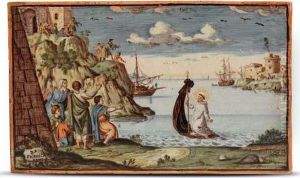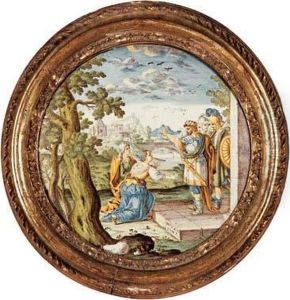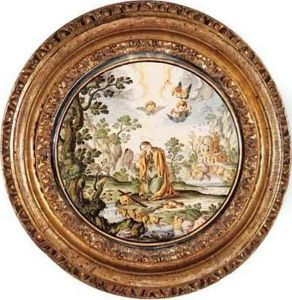Grue Francesco Antonio Saverio Paintings
Francesco Antonio Saverio Grue was an Italian artist born in the early 18th century, specifically in 1700, in Castelli, a town in the Abruzzo region famed for its ceramic production. He was a pivotal figure in the Italian ceramic art scene of the 18th century, belonging to the renowned Grue family, a dynasty of ceramicists whose work significantly influenced European pottery. The Grue family workshop, led by members across generations, was crucial in promoting the distinctive styles and techniques that characterized Castelli majolica ware, making it sought after across Europe.
Francesco Antonio Saverio's contributions were notable for incorporating innovative designs and enhancing the technical aspects of ceramic production. He expanded the palette of colors used in Castelli ceramics, introducing more nuanced and vibrant shades, which allowed for greater detail and realism in the depiction of scenes on ceramic pieces. His work often featured intricate narratives, including mythological and pastoral scenes, which were admired for their creativity and technical prowess.
Throughout his career, Grue exhibited a mastery over both the artistic and technical elements of ceramic-making, which helped elevate the status of Castelli ceramics to that of fine art. His pieces were not only popular in Italy but also garnered attention and demand from other European countries, contributing to the international reputation of Italian majolica ware during the 18th century.
Francesco Antonio Saverio Grue passed away in 1755, leaving behind a legacy that would influence Italian ceramic art for generations. His innovative techniques and artistic vision were carried forward by his descendants and other artists in Castelli, ensuring that the Grue family name remained synonymous with quality and artistry in the world of ceramics. His contributions are still celebrated today, and his works are considered collector's items, appreciated for their historical significance and artistic beauty.


